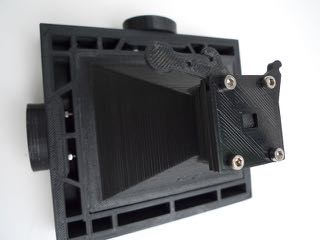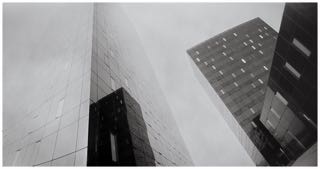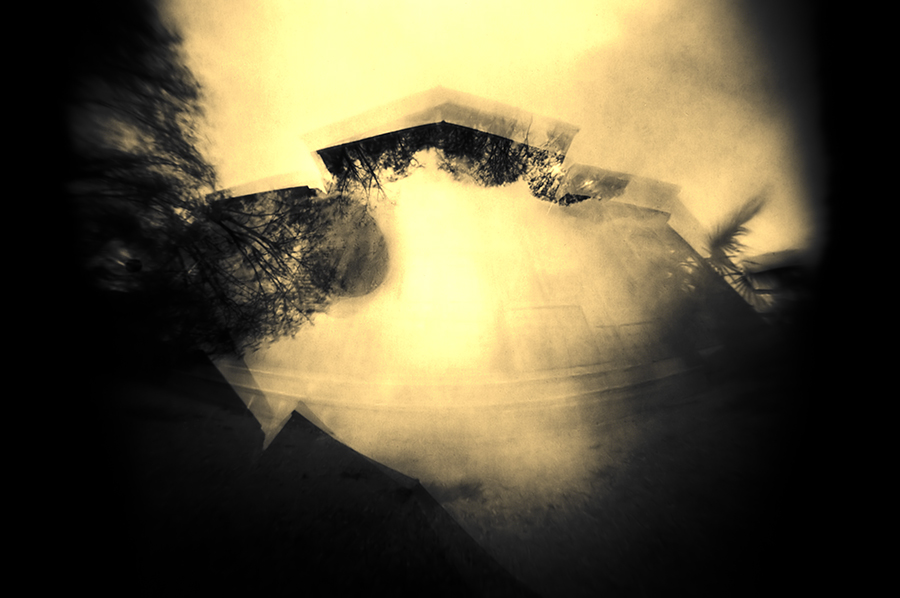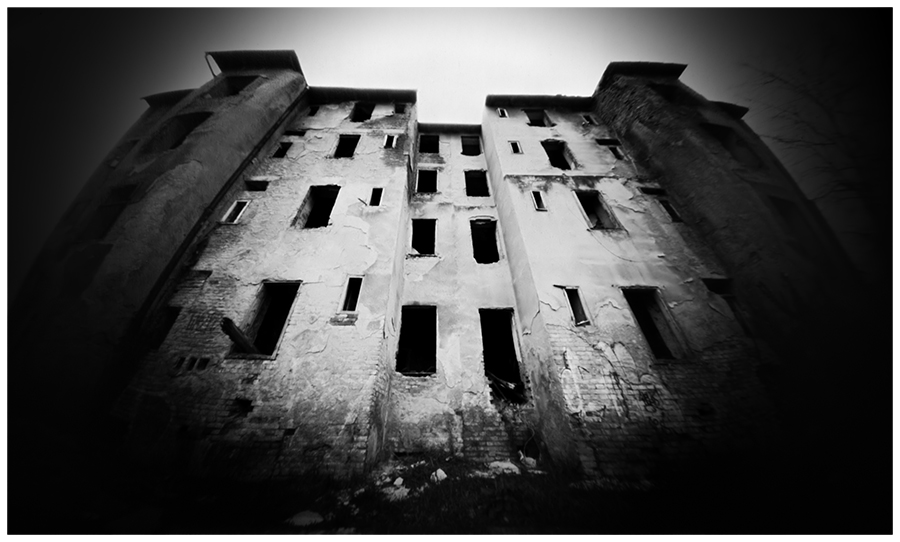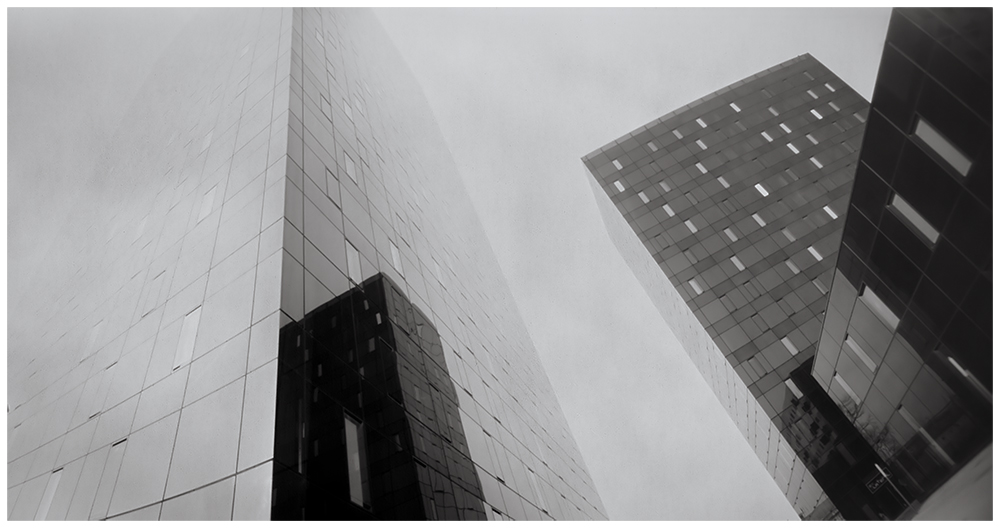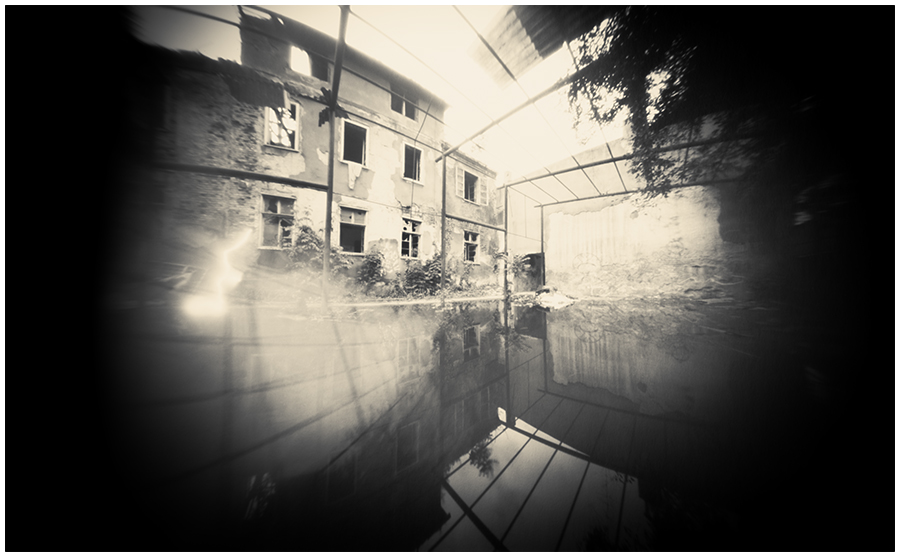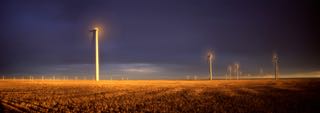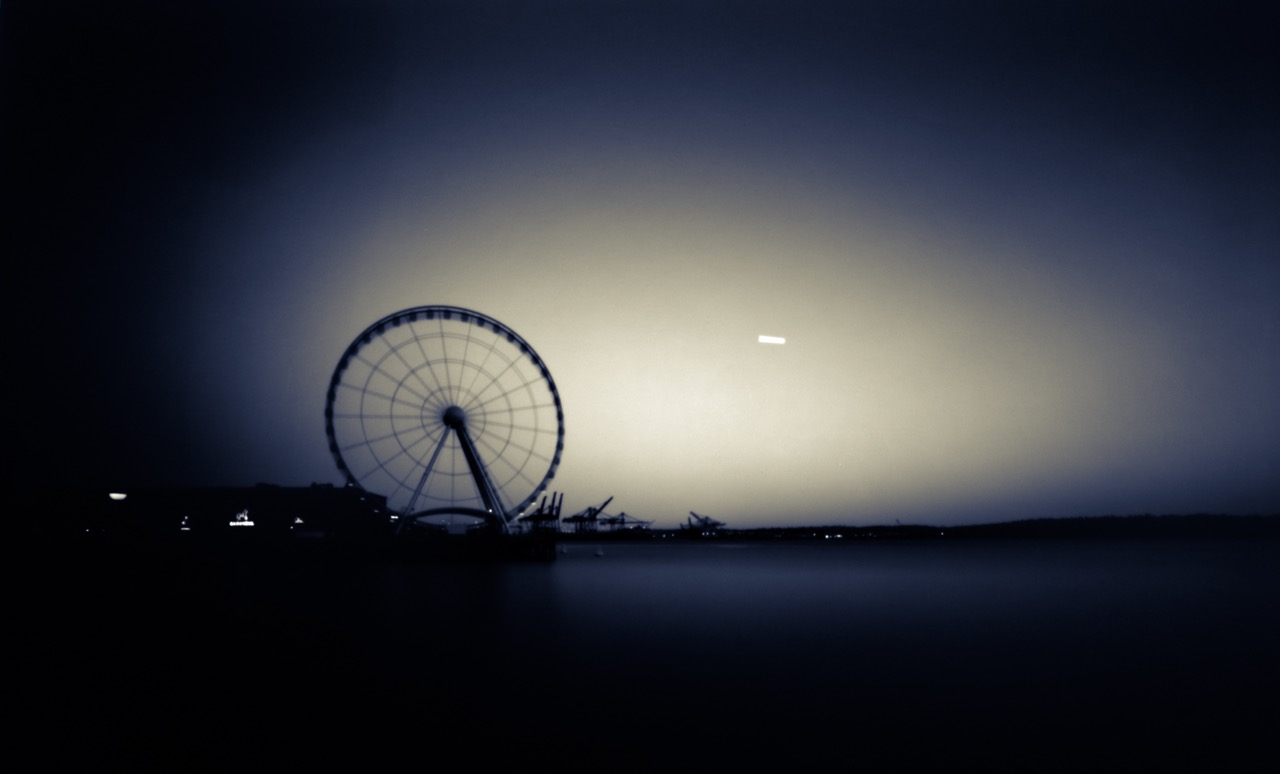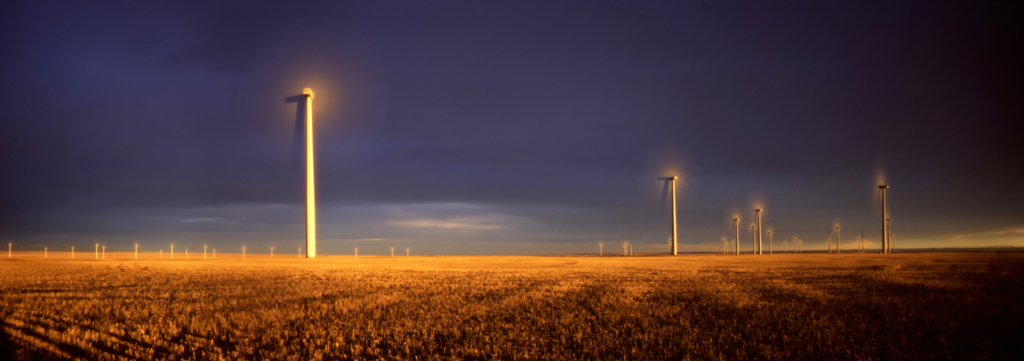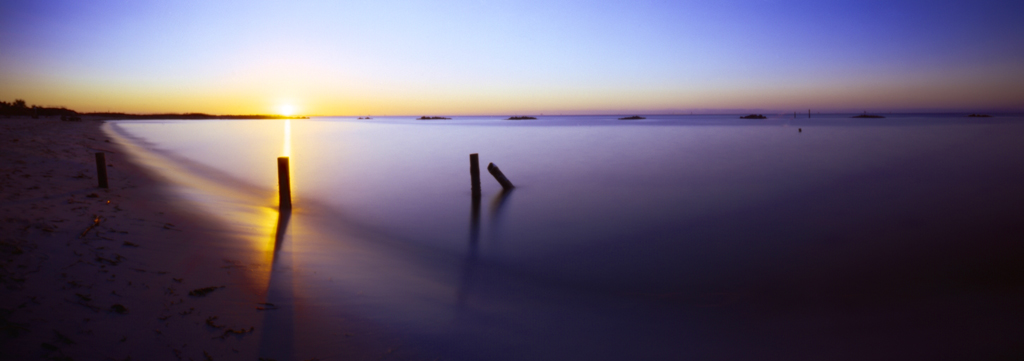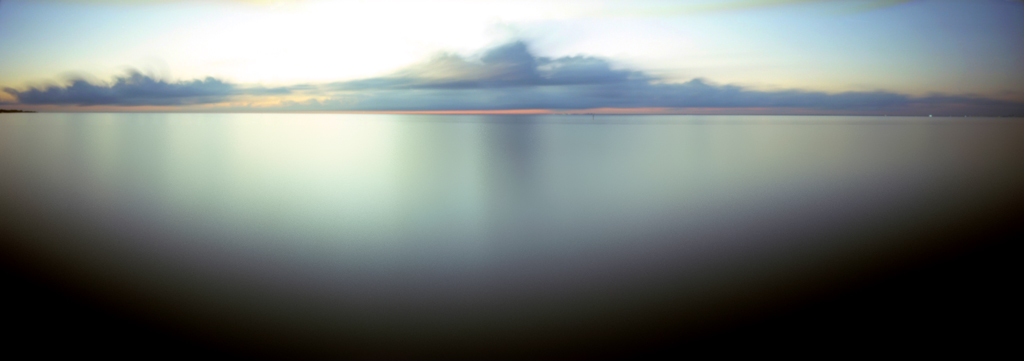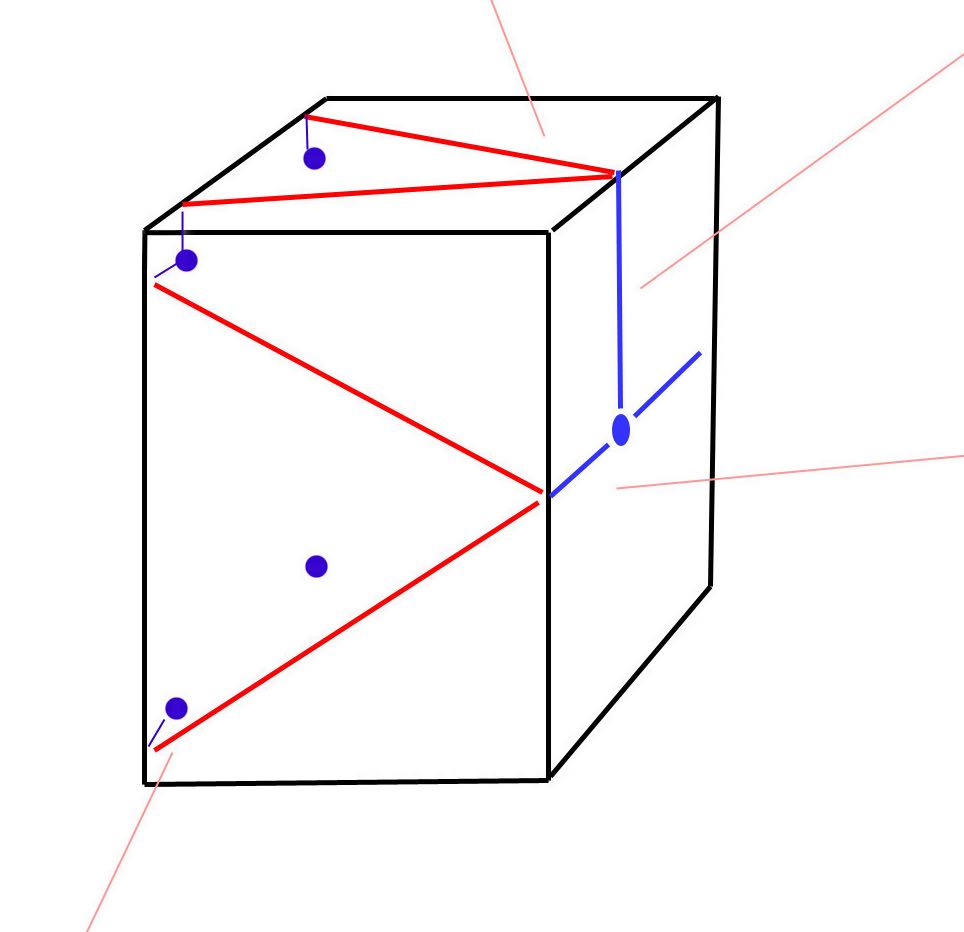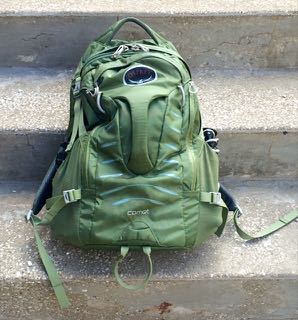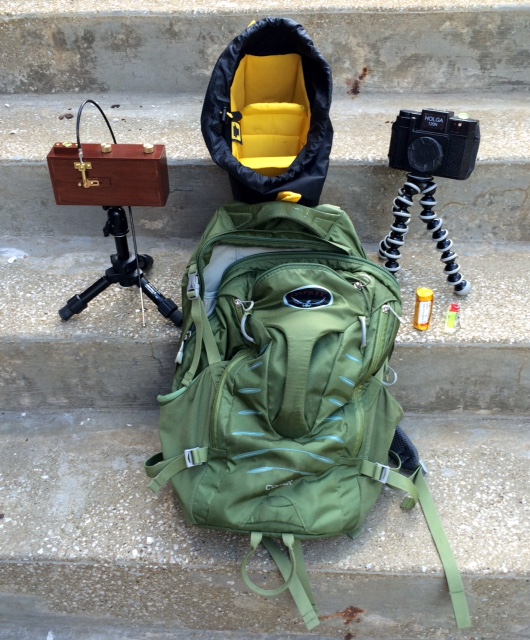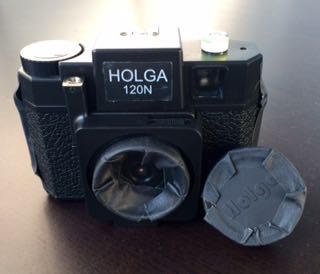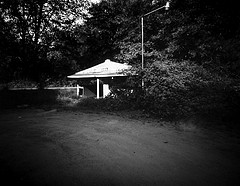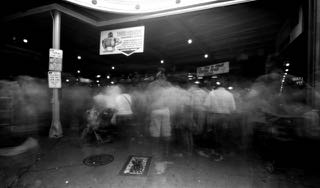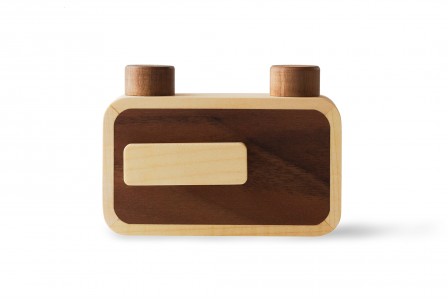Editor’s Note: In many circles today, 3D printing is making huge waves. This relatively new technology, which was once reserved for large corporate R&D departments, is now available for a larger market to make numerous innovative products. One could say that it was only a matter of time before this technology made it’s way into photography circles.
With the numerous possibilities of 3D printing in mind, ƒ/D is overjoyed today to bring you an article written by guest author Todd Schlemmer. Todd joins us to enlighten us on his adventures in 3D printing pinhole cameras and how you can print one of his cameras, even if you don’t have your own printer!
All images in this article are ©Todd Schlemmer.
[singlepic id=190 w=200 float=right] [/singlepic]I built my first pinhole camera some years ago, a heavy mahogany box bristling with all the brass embellishments I could find at the hardware store. I had thought about making such a camera for a long time, and I read everything I could find on the subject before sitting down to do the math. I selected a 6X6 format, and despite my ignorance and ham-fisted carpentry, the darned thing worked. To a degree. Sort of.
My camera’s – and my photographs’ – defects weren’t related to the basic calculations of pinhole photography and camera design, but to practical, film-handling considerations. I didn’t trust little red panes to keep photo-destroying light at bay. Without accurate indexing, I wasted film or worse, overlapped my photos. Unloading that first camera became a nervous exercise in destroying exposures. The shutter was a felted blade that pivoted open, often blurring the resultant image with movement.
I loved everything about it.
I designed and built another camera, and another, each an evolution from the previous. I improved the shutter, lightened the construction, and my photos improved. Learning to use a light meter and pre-calculating exposures with reciprocity failure went a long way towards better photographs, but I also came to know and trust my camera and films.
My Background
Three years ago, I had no idea what I was going to do with a 3D printer. Certain patents had expired and the technology was finding its way to hobbyists. I bought a kit of hardware and smoky laser-cut plywood parts and assembled them, intimately teasing out their secrets in the process. Meanwhile, I taught myself how to design objects for 3D printing, using tools like TinkerCad and OpenSCAD. Watching my new machine print an object, layer after layer, fascinated me. As my technical proficiency increased, my designs became more complex and I began to think about making functional objects instead of gnomes.
Which lead me back to pinhole cameras (and got me making pinhole photographs again). I was inspired by the Dirkon, a paper-craft pinhole camera design published in a Czechoslovakian magazine in 1979. A single printed template for the Dirkon could be used by many people to make a camera, and hundreds – possibly thousands – were cut out, folded up, and glued together.
[singlepic id=194 w=200 float=left] [/singlepic]My first 3D printed pinhole camera design was an ugly 35mm job PINHE4D that worked beautifully. I then designed a large format 4X5 camera, the PINH5AD, which worked well too. The PINH5AD received some attention on various blogs and websites. I’ve since designed many more cameras and accessories, all of which are freely available for download.
[singlepic id=193 w=200 float=right] [/singlepic]Thingiverse.com is a free online repository for sharing 3D printing files, owned by Makerbot Industries, a 3D printer manufacturer. Posting my work on Thingiverse.com proved a perfect way to share my work and hundreds of people around the world have downloaded my pinhole camera designs. I continue to iterate my designs, improving and refining construction, details, and accessories and I receive priceless feedback from people who 3D print and/or use them. The cameras are licensed as “Collective Commons Attribution-NonCommercial” which means that anyone can share, download or 3D print them, or modify them to their purposes, so long as the original design is credited, and no money changes hands.
When I shared my first camera designs, some people were skeptical that they worked without any photographic proof. I now post every photograph I make with my pinhole cameras. I aspire first to make good exposures and then good art, and I don’t alter, manipulate, or otherwise edit my scanned negatives and slides. My photos are an objective history of my learning process – 3D printing and pinhole photography.
[singlepic id=188 w=500]Bridge, Taken with PIN5HAD[/singlepic]
About 3D Printing
If you’re not familiar with 3D printing, the concept can be mind-blowing. Essentially a tiny computer-controlled glue gun, the printer actually draws an object in three dimensions, layer by layer. For hobbyist / consumer-type FDM (Fused Depositional Modeling) printers, the “ink” is a thermoplastic polymer filament with desirable thermal, strength, and stability properties. The filament comes in rolls and is either 3mm or 1.75mm in diameter. Filament is usually about US$40/kg, but you can pay more or less.
An object is designed in a simple CAD environment, and saved as a file which can then be “sliced” for your printer’s capabilities and your preferences. Like a player piano, the 3D printer reads the resultant Gcode, obeying the the sequential instructions for building the object.
It is mind-blowing.
Designing for 3D printing is an interesting exercise. Each layer of a 3D printed object requires something under it for support. If you wanted to 3D print a miniature kitchen table, the best way to print it would be to flip it upside-down. Printing it right-side-up works fine until you finish printing the legs and then the next layer, the underside of the tabletop, is mostly printed over thin air. A 3D printer will happily try to make this happen, but expect a pile of extruded plastic spaghetti. The software programs that convert a CAD file to 3D printer instructions can usually build temporary support structures to support overhanging parts, but the table is an extreme example and the required support is wasteful in time and materials. To avoid “overhang” issues, I have designed my cameras as collections of discreet parts which must be assembled with a few bits of hardware. This lets me optimize each part’s design and orientation for “printability”, but they still require finishing and assembly.
[singlepic id=196 w=500]Tank, Photographed with the PINHE4D[/singlepic]
3D Printing Options
[singlepic id=192 w=200 float=left] [/singlepic]I give my designs away because I want people to use my cameras
I recognize that most people do not have (or believe they don’t have) access to a 3D printer. This situation (currently) makes for a technological or economic barrier to entry. However, 3D printers are becoming more common, are becoming cheaper, and the sharing economy is making the technology more widely available. So, lacking a printer, how can you get one of my pinhole cameras?
Use a 3D printing service
Shapeways and Ponoko are two such web-based services, and I am sure there are others. My first foray into 3D printing was having custom Prius hubcaps printed by Shapeways, while I waited for my 3D printer kit to arrive.
These companies use commercial 3D printers that differ from the FDM consumer machines for which my cameras were intended. This would be an expensive experiment, but you could have a camera printed in a variety of materials. Of course, opacity and strength are considerations; so too are post-printing fit and finishing. Ceramic or aluminum are probably not viable options.
Peers with 3D Printers
There are a number of websites that serve to connect people possessing 3D printers with those who would 3D print something. I have participated in such a website as a 3D printer guy, but was discouraged by many designs that were unprintable. Coming up with your own design, from scratch, can take a lot of trial and error that is difficult without a printer at hand. Because of this, I’ve made sure my cameras are vetted designs that print well on a variety of machines, and you can be confident that taking my design to one of these printers should work well.
[singlepic id=189 w=500]Church, Taken with P66W[/singlepic]
Join a Makerspace or Hackerspace
Known by a variety of names, these are community-operated physical places, where people share their interests in tinkering with technology, meet and work on their projects, and learn from each other. Hackerspaces typically have 3D printers, laser cutters, assorted milling or wood-working tools, but every facility is different. Classes are often available. I learned how to program the open source CAD application OpenSCAD through a class I took at a local hackerspace. Expect to find very savvy people who can help you with your 3D printing project. Costs are often very reasonable but membership or hourly rates may apply.
Find a friend with a 3D printer
Ask around. When someone starts using a 3D printer, odds are good they will share what they’re doing with co-workers, friends, and family. This person may be able to help you. Expect to pay for time and materials.
[singlepic id=191 w=500]Mt Si, Taken with PINH5AD[/singlepic]
Get a 3D printer
It’s not as crazy as it sounds! A versatile printer that can produce my cameras and other nifty things can be had for less than US$500. Obviously, I believe in the future of this technology and I hope my pinhole camera projects serve to evangelize and promote it. There are all manner of clever people designing clever things and sharing them online. You can join their ranks.
Some advice, should you set out on this adventure: Buy and use open source products whenever possible. There are a number of contentious patent wars being waged by big players against smaller players. This situation is ugly and threatens to stifle innovation and increase costs. MAKE: magazine regularly reviews 3D printers and is a “Maker” Consumer Reports. Secondly, a 3D printer can be a fiddly beast and you will benefit from assembling a kit for your first printer. You’ll save some money, and you’ll learn exactly how your printer works, making your printer a tool, rather than an appliance.
[singlepic id=195 w=500]Space Needle, Taken with P66W[/singlepic]
Buy a pinhole camera from me
3D printing is not a process that lends itself to mass-production. 3D printing is best applied as distributed production, meaning that everyone who wants an object can just make their own. Originally intended for rapid prototyping, it has become an engine for novelty and customization, but cannot compete with other production technologies like injection-molding or even sand-casting. I don’t want to be in the 3D printing business. I want you to 3D print your own cameras, assemble them and make awesome photographs.
However, I recognize that the intersection of pinhole photographers and 3D printer owners is a tiny set of interesting people. So, occasionally, I sell cameras to photographers on Tindie.com. I haven’t listed everything that I can make, and demand is small, but if you want a camera, I can print and assemble it.
CAD software allows me to accurately dimension focal lengths and frame sizes, and the pinholes in my cameras are hand-made with equal precision. I use 0.001-inch-thick brass sheet and “drill” the aperture with a tiny precisely-measured awl. Finally, the pinhole is measured under a digital microscope and examined to check for flaws and roundness. This degree of precision allows me to specify an f-number for my cameras with confidence.
[singlepic id=197 w=500]Tube, Taken with P66[/singlepic]
Guidelines for 3D printing one of my cameras
Source files
As mentioned, all my camera designs (et al.) are freely available for download from Thingiverse.com
Some of my designs feature optional or redundant parts that can be confusing. Parts are “plated” (grouped for printing multiple parts simultaneously) and available as discreet objects. Additionally, my recent designs have a zip file containing all the necessary parts to 3D print a camera. Start with one of those. If you have questions, or problems with the files, I am very accessible through the Thingiverse messaging system and/or comments section for an individual design.
Materials
For FDM 3D printing, the two primary filament choices are ABS (think LEGO) or PLA (think compostable picnic ware). Prices are usually comparable, but the materials differ in various properties.
ABS is absolutely opaque, resilient, but stinky when printed. It also has a vexing tendency to warp while being printed. PLA is more pleasant to use, smelling like maple syrup (really!), is not prone to warping, but is often translucent to light which is a negative for camera production. I have found a PLA made by Shaxon that is both opaque and cheap (US$25/kg) and there may be other suitable filaments from other vendors. There are a number of other plastics that people are experimenting with, but they tend to be pricey, fussy, and are typically transparent-ish.
Slicing
This may mean nothing to you at this point, but when you get a 3D printer, this will begin to make sense. The objects to be printed are files in an STL format. Essentially a numerical representation of a three-dimensional volume, this shape must be “sliced” into layers before printing. The slicer (ex. Slic3r or Cura) serves as a printer driver to your 3D printer and controls tool-pathing, layer height, speed, and infill density among others. The slicer generates a set of instructions in “Gcode” to explicitly tell the printer how to build your object. The Gcode controls the temperature of the extruder and the heated print bed, the speed of the extruder while printing, the diameter of your filament (Yup, it varies), cooling fans, among many other parameters. It is beyond the scope of this forum to walk you through all the possible settings for your slicing software, but most 3D printers come with a configuration to get your started.
Once you have set up your slicer software, the important parameters are:
Layer Height – All my camera’s parts are some multiple of 0.20mm in height. Setting layer height to 0.20mm will provide dimensional accuracy.
Infill – I usually print with at least 50% infill for durability, but you can get away with less if your filament is opaque or you want to save some time printing. Infill can take a number of forms (rectilinear, hexagonal, and exotic mathematical structures), but simple is often best.
Top and Bottom Layers – Again, opacity and strength are very important, and I use at least three solid layers top and bottom. This means that the 3D printer will print three solid layers before it begins to use a fractional infill for the interior of the part. Similarly, the printer will print the top three layers of any surface as solid. The first solid layer may be rough or droopy, but subsequent layers will smooth out.
I hope you are intrigued by 3D printing and I sincerely hope you print one of my cameras!

